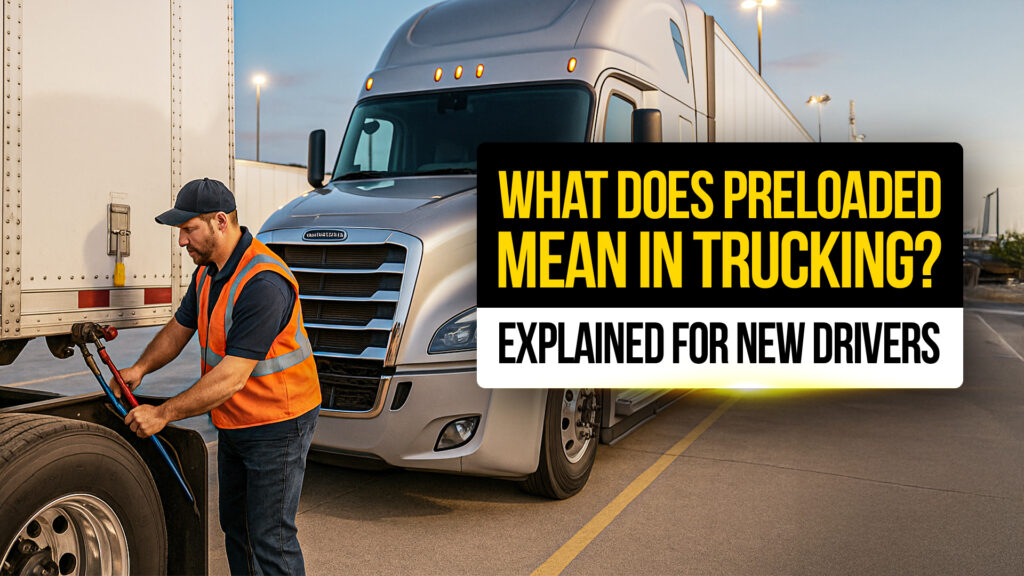
If you’re new behind the wheel of a big rig, you’ve probably heard the term “preloaded” tossed around at the yard or in dispatch. But what does preloaded mean in trucking, and why does it matter for your daily runs? In this quick guide, we’ll break it down in plain English, so you know exactly what to expect when you show up to a shipper or drop yard. Understanding preloads can save you time, stress, and wasted clock hours, especially if you’re paid by the mile.
What Does “Preloaded” Mean for Truck Drivers?
In trucking, a preloaded trailer is exactly what it sounds like: it’s already loaded with freight before you arrive. Instead of waiting for live loading (where you back up to the dock and wait while the shipper loads your trailer), you just drop your empty, hook up the preloaded trailer, do your pre-trip check, and hit the road.
Why do carriers and shippers use preloads?
- They save time for both drivers and shippers.
- They help manage tight delivery schedules.
- They reduce congestion at docks and yards.
Pros and Cons of Preloaded Trailers
✅ Pros:
- Less waiting: Cut down on detention time and waiting at docks.
- Faster turnarounds: Drop and hook keeps you moving, which can mean more miles.
- Predictable schedules: Preloads often help drivers stick to tighter delivery windows.
⚠️ Cons to Watch Out For:
- Sealed trailers: You might not get to see how freight is loaded, which can affect weight distribution.
- Delays still happen: Sometimes the trailer isn’t ready when you arrive.
- Tight backing: Drop yards for preloads can be tight, especially at night.
What It Means for Your Job as a New Driver
Knowing how preloads work helps you plan your hours and stay legal on your logs. If you’re paid by the mile, you want to keep moving, not sitting at a dock. But you also need to double-check your loaded trailer:
- Inspect seals and paperwork.
- Check your weight and axle distribution.
- Do a full pre-trip to catch any damage or issues.
Some company drivers love preloads because they’re quick. Others prefer live loads because you can watch how the freight is secured. Either way, good communication with dispatch is key.
How Drivers 1st Helps Drivers Handle the Details
If you’re tired of figuring it all out on your own, that’s exactly why Drivers 1st exists. We help drivers sort through the fine print, like how preloads affect your clock, your pay, and your schedule, so you can choose routes and carriers that actually fit your lifestyle. No pushy recruiters, just real support.
Tips to Handle Preloads Like a Pro
- Ask ahead: Always confirm if your trailer will be preloaded or live loaded.
- Keep scales handy: Know where the nearest CAT scale is to check your weight.
- Inspect thoroughly: Don’t skip your pre-trip, even if you’re in a rush.
- Plan detention: Know your carrier’s detention policy in case you do have to wait.
Final Thoughts
So, what does preloaded mean in trucking? It means less waiting, more moving, but only if you plan ahead. Your license is your business, make it work for you by knowing how preloads fit into your day.
Whether you’re new to trucking or ready for a change, Drivers 1st is here when you are. No pressure, just better job options that match your life.
→ Search CDL Jobs Near You
→ Talk to a Driver Advocate (No Pressure)
For more updates and insights into the trucking world, stay tuned to Drivers1st.com!
